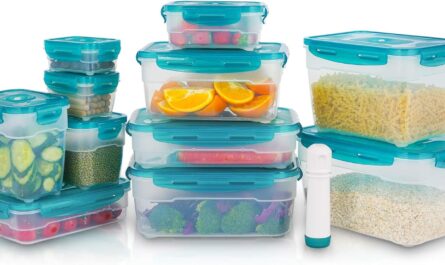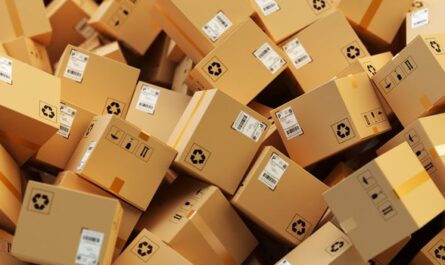The Changing Landscape of Industrial Packaging in Modern Manufacturing
Evolution of Packaging Materials
Packaging materials have come a long way from traditional wood, cardboard and glass containers. Advanced materials like plastics, composites and metals are now commonly used in industrial packaging due to their superior strength, durability and moisture/chemical resistance. Plastics like HDPE, LDPE, PP and PET offer cost-effective and lightweight packaging solutions for a variety of products. Composite materials combining plastics, wood or paper provide multi-layer protection. Corrosion resistant metals like steel and aluminum sheets are ideal for harsh outdoor and hazardous conditions. New bio-based and biodegradable materials are also gaining popularity due to sustainability concerns. Continuous innovation in material science is expanding packaging options for manufacturers.
Design Innovation Driven by Modern Manufacturing Needs
To keep pace with the fast changing manufacturing landscape, packaging designs are increasingly customized based on specific product and process requirements. Configurable packaging allows easy integration into automated assembly lines. Self-clinching, easy-opening features speed up handling. Strong sealing and tamper proof designs ensure safety and security during transport. Radio frequency identification (RFID) tags and smart labels with embedded sensors enable real-time tracking and monitoring of shipments. Collapsible bags, nestable containers optimize space utilization. Packaging also plays a key role in branding and marketing by providing attractive product displays on shelves. Designs incorporating virtual and augmented reality are bringing packaging to life.
Sustainable Packaging Trends
As environmental regulations tighten globally, sustainable packaging is a major focus area. Brand owners and manufacturers actively partner with packaging suppliers to develop eco-friendly solutions. Use of recycled content in packaging production cuts down on virgin material usage. Recyclable and compostable materials ensure packaging waste is diverted from landfills. Lightweighting techniques reduce material quantities without compromising protection. Reusable and returnable transport packaging maximize asset utilization. Biodegradable substitutes avoid long-term contamination from non-renewable materials. Better packaging design also optimizes packing configurations, fills empty spaces and brings down transportation fuel consumption. Standardization of sustainable practices encourages a circular economy approach across the value chain.
Advanced Manufacturing and Automation
Cutting edge technologies are transforming industrial packaging line operations. Robotics and automated guided vehicles autonomously transport raw materials and finished packages within facilities. Three dimensional printing molds customized inserts, liners and brackets. Computer vision systems instantly inspect prints, seals and pack quality. Internet of Things (IoT) devices monitor production metrics, asset performance and optimize processes in real-time. Big data analytics reveal inefficiencies and help eliminate waste. Integrated digital workflows automate ordering, fulfillment and equipment maintenance tasks. Augmented reality assists operators during set-ups or repairs. As Industry 4.0 evolves manufacturing to be smarter, mobile and predictive – packaging operations keep aligning with digital transformation demands.
Supply Chain Integration and Performance
To ensure just-in-time deliveries, packaging design and selection directly influences supply chain dynamics. Vendor managed inventory programmes rely on reusable containers managed by suppliers. Consolidation packaging pools shipments for favorable freight rates. Intelligent packaging tracks environment conditions, detects tampering and communicates with logistics systems. Blockchain enabled provenance shares real-time order status and authenticates quality certifications. 3PL partnerships seamlessly coordinate multi-modal transport, warehouse handling and returns. Packaging plays an active role in improving supply chain visibility, transportation efficiencies, asset utilization and brand protection during shipments. Understanding total supply chain impacts and life cycle costs emphasizes the strategic importance of packaging in modern integrated operations.
Regulatory Compliance and Global Trade
Harmonizing packaging with international regulations facilitates cross-border movement of goods. ISTA certified designs withstand robustness tests for safe transport. ISO standards lay down sustainability metrics and common testing protocols. UN recommendations guide hazardous material classification, definitions, markings and placards. Regional economic unions like EU have their packaging waste management directives. Complying with various country-specific import rules involves employing right materials, designs, packaging sizes and labeling formats. Extracting, summarizing and communicating regulatory updates maintains legal compliance. Leveraging free trade deals necessitates global packaging footprints optimized for multinational production and consumption markets.
Future Trends
With industry convergence underway, packaging solutions are expected to be more interactive, intelligent and sustainable in future. Advances in material science will spur innovations like active/smart packaging with embedded sensors, LIDAR tags or MEMS devices. Modular designs would configure based on order details decoded from blockchain records. Autonomous guided vehicles and modular assembly lines will minimize human intervention in packaging lines. Digital twins powered via IoT will optimize packaging designs on real-time process parameters. Nanocoatings treatment, biomimcry and bioprinting will revolutionize materials. Collaborative robotics may handle delicate operations requiring precision. Digital catalogs and AR/VR aided customization will transform how packaging is procured. Sustainability leadership through extensive recycling loops, elimination of single-use plastics and renewable/biodegradable packaging technologies will take center-stage.




